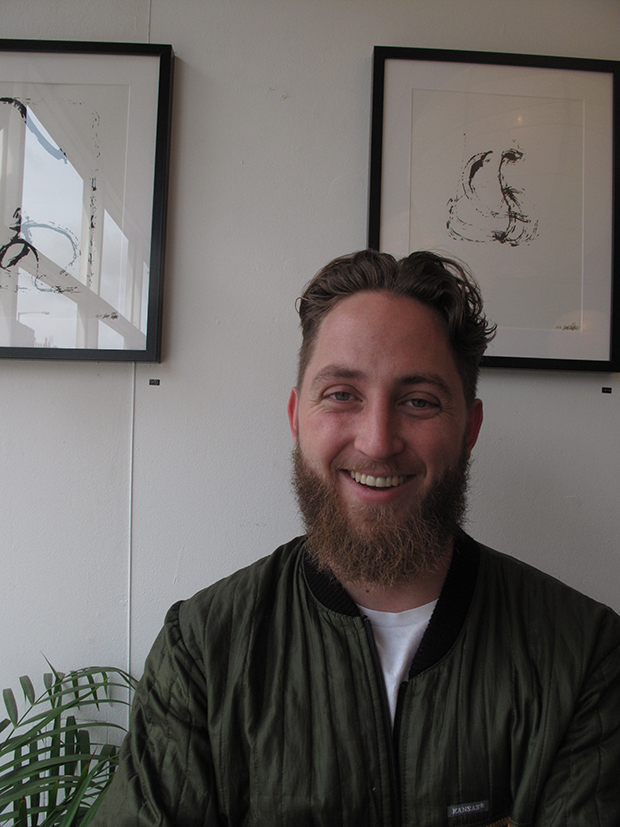
Why do fish school or birds flock together, and how can replicating this behaviour be of use to humans?
A collection of black random squiggles that last month adorned the walls of a café on Lower Clapton Road may hold the answer.
Said squiggles are the world’s first ‘autonomous paintings’, made by miniature robots and part of 28-year-old Danish architect Jens Pedersen’s research into self-organising behaviour.
“The reason why fish school and so on is essentially down to these really dumb rules, but through interaction these rules form global order or harmony,” says Pedersen, an architectural consultant who came to London as a student in 2010.
“I have looked at a lot of these systems digitally, figuring out how they work and now I’ve got to the point where I want to do them physically.”

Making a robot is not as difficult – or expensive – as one might think. Pedersen uses a toy called Bristle Bots (“basically just the head of a toothbrush”), which he hooks up to a battery and a tiny vibrating motor normally found in old telephones.
“It’s super crude, you just take the toothbrush, dip it in paint and it starts moving around. The paint itself alters the canvas and that alters how the other robots interact with the canvas, so it becomes this feedback between how the other robots have moved around and the other robots adjust their behaviour,” says Pedersen.
Naysayers may at this point declare: ‘That’s not art!’ But Pedersen points out that applying paint randomly, as the robots do, is a technique reminiscent of some of the greats.
“Some of my friends who’ve seen them say it’s a little bit like Pollock and there’s that element of randomness in that I can’t replicate,” he says.
“It’s a different technique to introduce randomness into art and leave the quality of it to the beholder.”
Getting robots to make art for you smacks of automation gone mad. Where’s the creativity and what’s the end goal, I ask.
Pedersen says he has a “running joke” with himself that one day 2,000 robots like this could populate and explore the surface of Mars. His reasoning harks back to two opposing theories of robotics.
“A US university made this huge robot that calculated every step it would take to make sure it was accurate,” he says.
“Every little step would take a day, so it would move slowly.
“But then other people were hypothesising about these little robots that had an awareness of where the other guys were and would adjust their behaviour accordingly.
“Those robots would be really cheap and really dumb, but they would be able to cover more ground faster than the big highly intelligent robot.”
Mars and other worlds tomorrow, but for now Lower Clapton and a brief foray into the art world is excitement enough.
“It’s very interesting and I’ve thought a lot about it,” Pedersen enthuses.
“In a way if we make the grand parallel to how art has developed over time I think the use of robotics is a natural step – maybe not the use of robots but certainly the use of robots as a technique.
“So this could be seen as a purely technique driven progression within the field of art rather than just to say ‘I’ve made these little robots that can paint’.”
